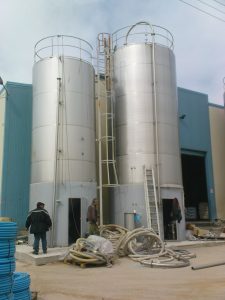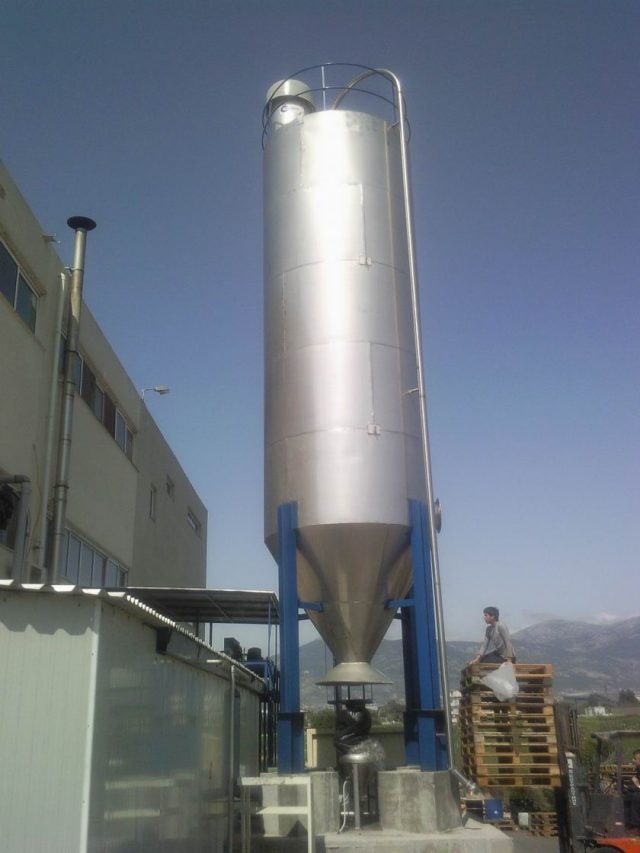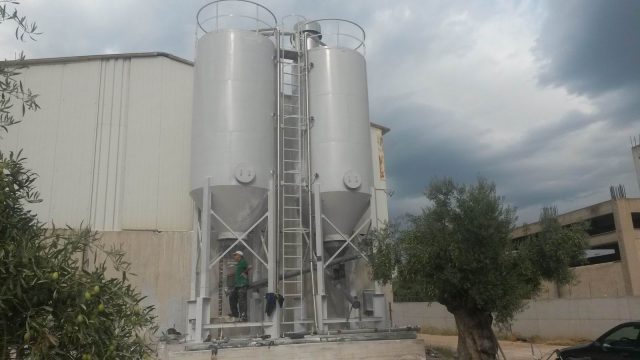Steel silos
Steel silos
Steel silos of all sizes, e.g. 5, 10, 20, 50, 100 m³ etc., in St 37.2 (mild carbon steel) or INOX 304, INOX 316 (stainless steel) or aluminum.
Depending on the product, the material and also the geometry of the silo are selected.
Important factors are the specific weight, angle of repose, and behavior of the product in moisture, how well it flows, whether it is abrasive or brittle, etc.
Geometry in silos:
Cylindrical steel silos
Cylindrical silos are the most common in the industry. A common dimension is Φ 2850 x 10000 mm. The cone in steel silos must have an inclination of 70°, so as to ensure a good flow. In products that flow easily and do not stick (such as plastic pellets, wood pellets, etc.) the cone can have a smaller inclination of up to 45°.
The silos are supported with 4 legs or with a ¨skirt¨, i.e. with a cylindrical sheet, which forms an entire room, which is closed with a door.

silo with skirt
Steel silos are suitable for all kinds of products, such as sugar, salt, flour, starch, milk powder, spices, grain, animal feed, corn, cotton cake, string, manure, fertilizer, chemical, urea, marble dust, cement, lime, pet coke, etc.
.
Rectangular steel silos
Rectangular silos have a higher useful capacity than cylindrical ones. In difficult-to-flow products, corners can be a problem. A solution to this problem can be given if we round the corners, as shown in the photo:

Rectangular silos also need external reinforcement in their body, unlike cylindrical silos.
.


